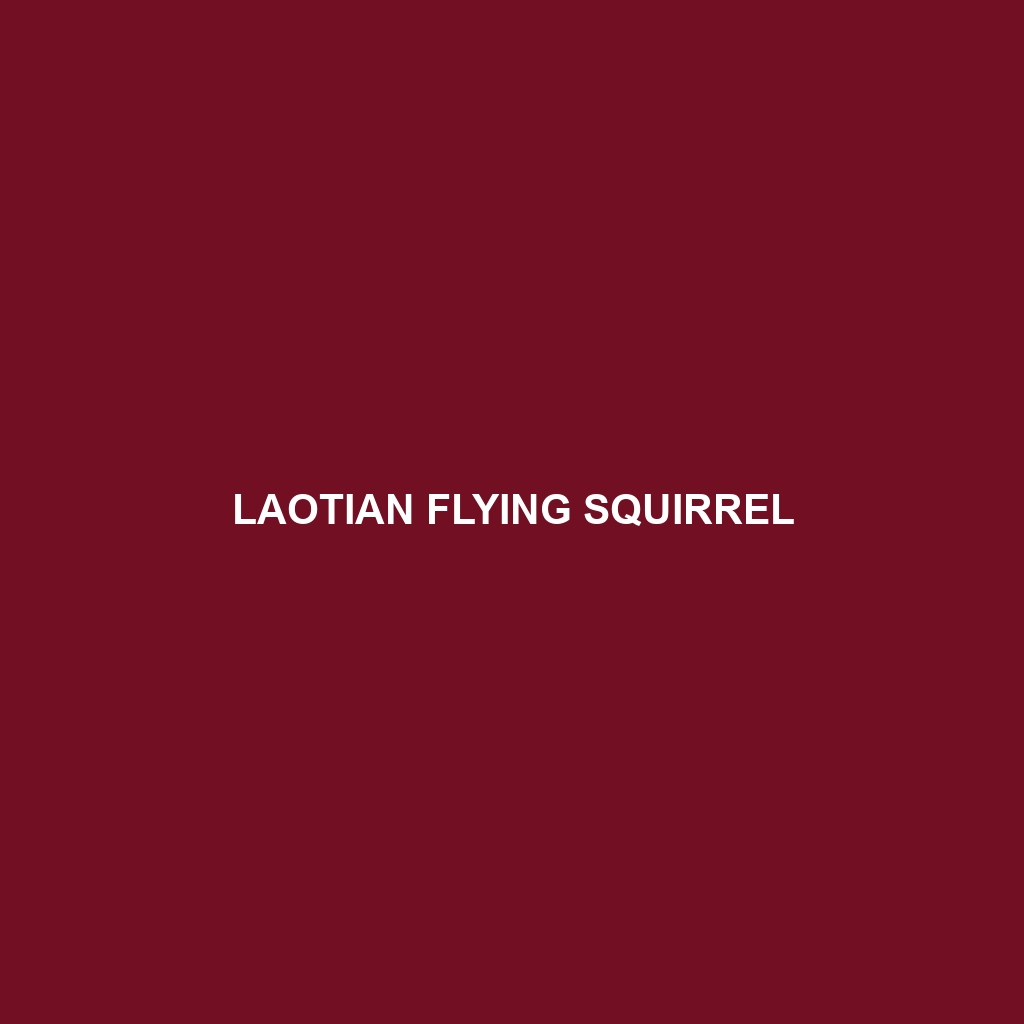Common Name: Laotian Flying Squirrel
Scientific Name: Biswamoyopterus laoensis
Habitat:
The Laotian Flying Squirrel is primarily found in the forests of Laos, particularly in the mountainous regions and dense tropical rainforests. This species thrives in high-altitude areas where tall trees provide ample cover for gliding and nesting. Additionally, it can also be found in nearby regions of Vietnam and Thailand, emphasizing its preference for undisturbed natural habitats rich in biodiversity.
Physical Characteristics:
Laotian Flying Squirrels typically measure between 30 to 45 cm in length, with a tail that can equal their body length. They possess soft, thick fur that is predominantly grayish-brown, with lighter underparts. One of their most distinctive features is the large, membranous skin extensions between their legs, which allow for remarkable gliding abilities. Their wide, flattened tails act as stabilizers during their impressive aerial maneuvers.
Behavior:
These nocturnal mammals are known for their impressive gliding ability, which enables them to travel up to 150 meters in a single glide. Laotian Flying Squirrels are generally solitary, although they may form small groups during mating season. They are arboreal, spending most of their time high in the trees and are adept at leaping between branches, showcasing their agility and grace.
Diet:
The diet of the Laotian Flying Squirrel mainly consists of fruits, nuts, and leaves. They have a particular fondness for figs, which are abundant in their habitat. This species is known for its foraging behavior, often gliding between trees to locate food, which is essential for their survival and energy needs.
Reproduction:
The Laotian Flying Squirrel typically breeds once a year, with the mating season occurring during the dry season, from late fall to early spring. After a gestation period of approximately two months, the female gives birth to one or two offspring, which are cared for in tree hollows or nests until they are able to glide independently.
Conservation Status:
The Laotian Flying Squirrel is currently listed as vulnerable by the International Union for Conservation of Nature (IUCN). Habitat loss due to deforestation and agricultural expansion poses a significant threat to its population. Conservation efforts are critical to protect this unique species and its natural habitat.
Interesting Facts:
One fascinating aspect of the Laotian Flying Squirrel is its ability to glide. It uses its patagium—the membrane stretched between its forelimbs and hind limbs—to maneuver through the forest canopy elegantly. Additionally, this species has adapted to a variety of forest types, showcasing its resilience to changing environments.
Role in Ecosystem:
The Laotian Flying Squirrel plays a vital role in its ecosystem as a seed disperser. By consuming fruits and nuts and traveling between trees, they help propagate various plant species, enhancing forest biodiversity. Their presence also serves as an indicator of a healthy forest habitat, emphasizing the importance of conservation efforts to maintain ecological balance.
